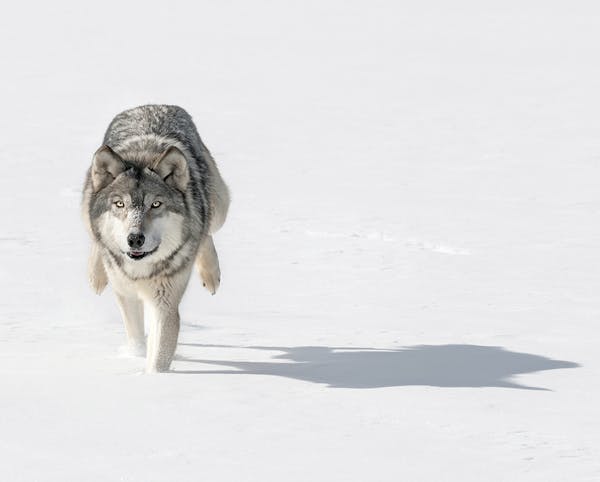Deep in the Superior National Forest, researchers are studying the lives of Minnesota's elusive lynx by carefully collecting the traces they leave behind.
On clear days, when the wildcats' tracks stand out in the deep forest snow, wildlife biologist Dan Ryan heads out on the trail. Minnesota once was home to the Midwest's largest population of these solitary cats with the tufted ears and comically oversized feet. But by 2000, population decline had pushed them onto a federal list of threatened species. Biologists are collecting lynx DNA in an effort to keep tabs on the rare cat.
Anyone who's walked a dog knows the job involves a certain amount of scooping. Collecting lynx DNA is a bit like that, if you substitute the dog for a secretive and threatened species and your neighborhood sidewalks for the vast snowy reaches of the Superior National Forest.
"It's hard work," said Ryan, who logged 30 miles last winter, just trailing lynx and looking for scat. "It's really cold and the lynx … go through the thickest and nastiest woods we have out there. Sometimes you're having to crawl through the balsam fir. On those cold days, it can be tough. Sometimes, you have to trail them for more than a mile, hoping to find some scat. Most of the time you don't. But it's given us some good information."
Lynx are so shy that even Ryan, who studies them for a living and who works in the heart of their territory — the U.S. Forest Service's Laurentian Ranger District — is lucky if he catches sight of one.
"I would usually see a couple a year, but that's spending a lot of time where I know they are and where the families with kittens are," he said. "There are some years where I don't even see one, even though many times I know I've been close — you can see it in the tracks, can tell when they started running away."
But he's not out there looking for lynx. He's collecting stray hairs from their beds and scooping cat scat.
It's a dirty job, but it's less expensive and less intrusive than other methods, such as trapping the cats and fitting them with radio collars.
"It's just a noninvasive way to survey the population out there without having to actually capture them and drug them and put a collar on them," Ryan said. "It's a pretty cheap, noninvasive way to monitor what we have going on up there."
Over the past decade, Ryan and his colleagues have collected hundreds of lynx DNA samples.
The lynx scat is bagged, taken back to the office to dry out and sent off to a lab in Colorado for analysis.
For years, the forest service has been collecting and analyzing these bits of DNA to assemble a snapshot of the lynx population. They know what the cats are eating and where they're moving around in their range. They know which ones are breeding and they're building entire family histories of the lynx generations.
As for the part about bringing paper bags of lynx waste back to the office: "I do hear about it," Ryan said. "I have to find spots to hide them around the office where I won't hear too many complaints. It's not too bad, they dry out pretty fast."
A hardy band of volunteers also helps out with the work of trapping and collecting. Many are retired biologists from the forestry service or U.S. Fish and Wildlife.
"We use the data to look at habitat use, record where [the lynx] trail. We record where we find snowshoe hair kills [a staple of the lynx diet] or a lynx bed," Ryan said. "It helps with forest management."
Asked if he thought his work would have made for an interesting episode of the Discovery Channel's "Dirty Jobs," Ryan said with a smile, "I actually thought it would be."
Jennifer Brooks • 612-673-4008

Second teen suspect arrested in Minneapolis 'Nudieland' mass shooting that killed 1, injured 6
Charges: Friendly fire killed man standing among group who shot at moving SUV in south Minneapolis

Lakeville public safety training facility gets $800K in federal funding

